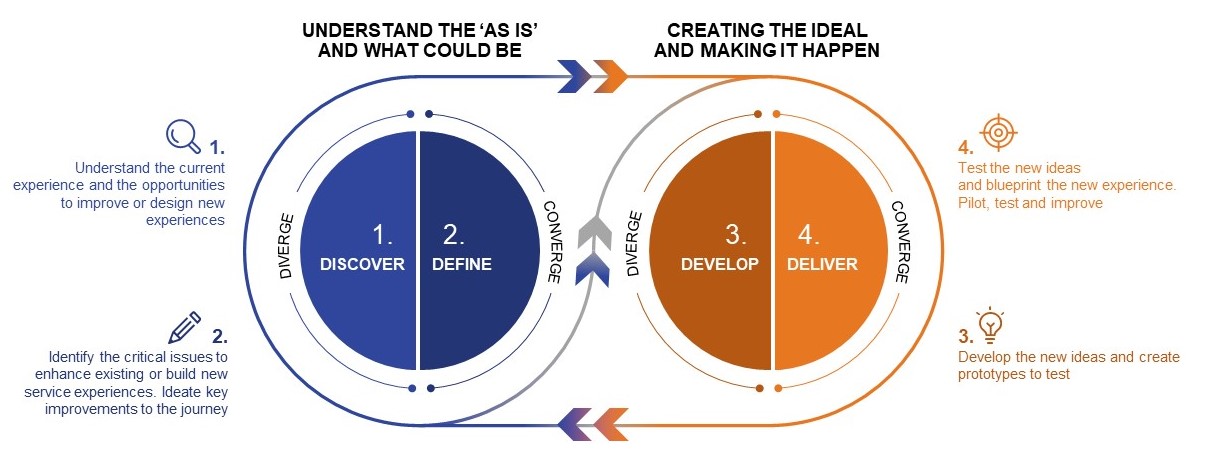CX Service Design: Creating emotional attachment and driving brand growth
 We live in volatile times that are influencing customers’ expectations, needs and opinions. Understanding and empathising with customers and the context of ‘their world’ needs to be at the heart of experience design.
We live in volatile times that are influencing customers’ expectations, needs and opinions. Understanding and empathising with customers and the context of ‘their world’ needs to be at the heart of experience design.
In this paper, Ipsos shares best practice and service design guidelines for brands to create emotional attachment and drive the right behaviours; this shift will lead to increased retention, share of spend, advocacy, operational efficiency, and, ultimately, an improved Return on CX Investment: ROCXI.
Download the paper for a more in-depth look at Ipsos CX Service Design case studies, examples and actionable frameworks.
Why do brands and CX teams need to pay attention?
Customers are being regularly exposed to new touchpoints and channels. These new experiences are influencing and recalibrating customers’ expectations of how brands should be servicing them.
Through our research, we see the rising cost of products and services is increasing customers’ expectations of the experience delivery.
Now, perhaps more than ever before, there is a real need to understand how to design your experiences to meet these changing customer needs.
How can brands leverage the ‘Forces of CX’?
The Forces of CX is a framework that identifies six validated key dimensions which are strong predictors of emotional attachment and relationship strength. Focusing on them enables brands to refocus Customer Experience design, measurement and management to address what truly matters.

What are the key components of an experience?
You need to take every aspect of the experience into account; dissect it into different parts to ensure all facets work cohesively to meet customer needs, deliver on the brand promise and drive positive customer interactions.
Using the analogy of a theatre production, let’s imagine a branded car dealership service experience:
- ‘Front stage’ refers to everything with which a customer directly interacts. This includes everything they see, hear, do, sense, and feel. In a car service experience this would include: the booking stage through the website, app or in person over a phone; dropping the car off for the service, interacting with the reception staff, the waiting area, the coffee machine; all the way through to the information they receive after the service has been completed.
- ‘Back stage’ is everything that goes on behind the scenes and supports the front stage interactions. These are the teams in place, the systems, technology, and processes set up to enable the delivery of the experience to meet and, indeed in some cases, exceed customer expectations. Again, using the car service experience, this might include IT and User Experience teams who design the booking process, Learning and Development who trains the front-line teams, the Operations teams who manage the dealerships and service centres, Marketing and Branding who might design the waiting experience, and, of course, the car engineers who take the car through the service.
The four stages of CX service design
Service design is an iterative process where four stages inform and build on each other. The service design approach is based on the Double Diamond Framework created by the British Design Council. It’s not a strict linear process as you may move from Discover to Define and then identify a need to go back and Discover again.

The three takeaways for creating world-class CX
So, beyond delivering ROCXI, what are the key takeaways when considering that experience you have in mind, that’s ripe for creating, recreating or revamping?
- To improve your Customer Experience you need to design experiences to communicate your brand promise across your customer journey, and meet relational, emotional needs; to go beyond meeting functional needs, to drive emotional attachment.
- Ipsos’ Forces of CX provides the framework to underpin the evaluation and exploration of needs, the inspiration to fuel designs, and the focus to create experiences which truly meet customers’ needs.
- Service design is a company effort. When designing services, you need to rise above company silos and bring teams together to align around the customer journey. Ensuring that you have a ‘one team’ approach through the design of your experiences will mean that your new services are set up for success.
Next steps?
If you would like to:
- Learn more about CX Service Design and how to (re)design experiences to drive the right customer outcomes
- Find out more about ROCXI analytics to understand how to calculate the Return on your CX Investment
- Understand more about how the Forces of CX can help your business
- Register your interest for a Forces of CX personalised workshop for your sector
Please get in touch with us at [email protected].
Check out CX Service Design for a more in-depth look at Ipsos’ case studies, examples and frameworks.





